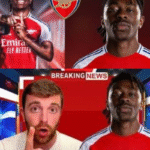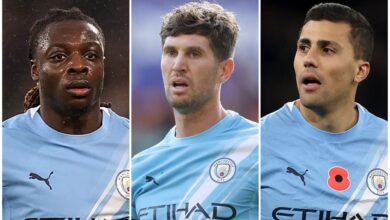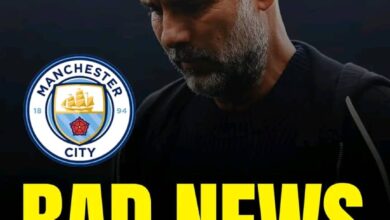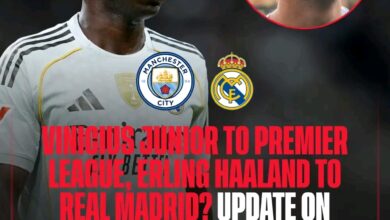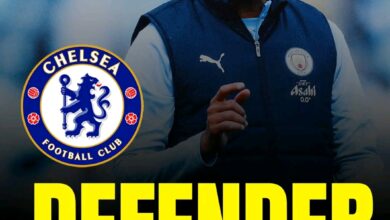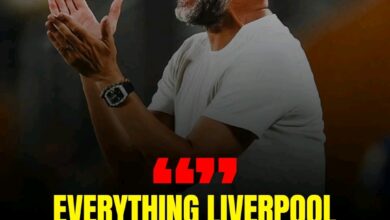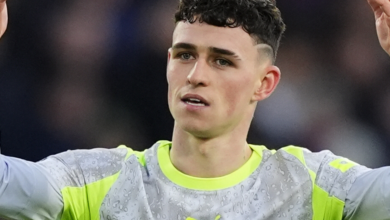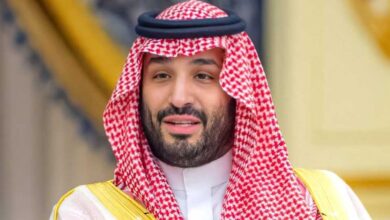Fabrizio Romano revealed the Signing of new player to the team
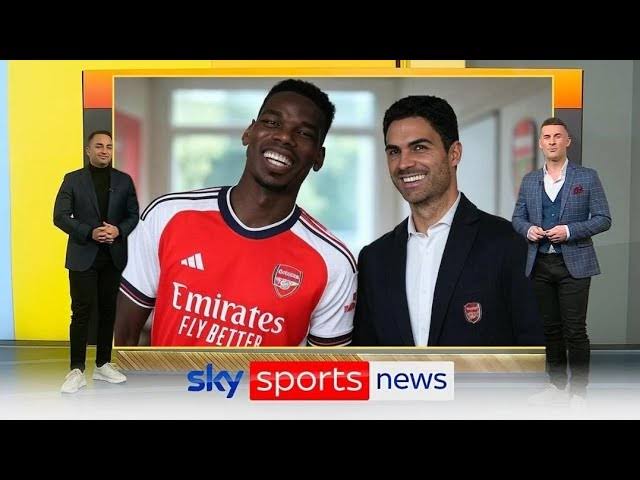
As the Premier League season draws to its conclusion, Arsenal finds itself at a crucial juncture in their development under Mikel Arteta. The upcoming summer transfer window, which opens at the end of May 2025, presents a unique opportunity for the Gunners to address key areas of their squad and strengthen their position as genuine title contenders. With the FIFA Club World Cup creating an unprecedented dual-window system this summer, Arsenal’s transfer strategy becomes even more intriguing.
The North London club has demonstrated remarkable progress over recent seasons, establishing themselves as consistent Champions League participants and mounting serious title challenges. However, the 2024/25 campaign exposed certain vulnerabilities that need addressing, particularly in the striker position where lengthy injuries to key players significantly impacted their attacking output. This comprehensive analysis examines three potential deals that Arsenal could realistically complete during the early transfer window, considering both tactical requirements and financial constraints.
This summer’s transfer window operates under a unique structure due to FIFA’s Club World Cup taking place in June. The initial window runs from June 1-10, followed by the traditional extended period from June 16 through September 1. This dual-window system creates interesting strategic possibilities for clubs like Arsenal, who can potentially secure early signings to integrate players before the main transfer scramble begins.
The early window particularly benefits clubs participating in European competitions, as it allows for tactical adjustments and squad integration before pre-season preparations intensify. Arsenal, having secured Champions League qualification, can leverage this advantage to complete strategic acquisitions that align with their long-term vision while other clubs remain in negotiation phases
Viktor Gyökeres has emerged as one of Europe’s most prolific strikers during his time at Sporting CP, establishing himself as a complete forward capable of leading the line for elite clubs. The Swedish international’s statistics speak volumes about his quality: his goal-scoring record in the Portuguese league has been exceptional, combining clinical finishing with intelligent movement and physical presence that would suit the Premier League perfectly.
Arsenal’s striker situation has been a concern throughout the 2024/25 season. The injuries to Kai Havertz and Gabriel Jesus exposed the lack of depth in this crucial position, forcing Arteta to deploy makeshift solutions that, while tactically interesting, lacked the consistent goal threat necessary for title ambitions. Gyökeres represents a proven solution to this problem, offering the physical attributes and goal-scoring instinct that Arsenal have occasionally lacked in crucial moments
Gyökeres’ playing style aligns perfectly with Arsenal’s possession-based approach under Arteta. His ability to hold up play, link with advancing midfielders, and create space for wide forwards like Bukayo Saka and Gabriel Martinelli makes him an ideal tactical fit. The Swedish striker’s work rate and pressing intensity would complement Arsenal’s high-energy defensive approach, while his aerial ability provides an additional dimension to their attacking arsenal.
The 26-year-old’s experience in different tactical systems makes him adaptable to Arteta’s evolving tactical philosophy. Whether deployed as a traditional number nine or in a more fluid role that allows for positional interchanges, Gyökeres possesses the technical skills and tactical intelligence to thrive in Arsenal’s sophisticated attacking patterns.
Sporting CP’s valuation of Gyökeres reflects his importance to their system and his proven track record at the highest level. However, Arsenal’s improved financial position, bolstered by consistent Champions League participation and strategic player sales, provides the necessary resources to pursue this caliber of signing. The early transfer window presents an opportunity to negotiate before other interested parties intensify their pursuit.
The deal structure could involve performance-related bonuses tied to Arsenal’s success in domestic and European competitions, aligning Sporting’s interests with Arsenal’s ambitions. This approach would demonstrate Arsenal’s confidence in their project while providing Sporting with potential upside beyond the initial transfer fee.
Oleksandr Zinchenko’s time at Arsenal has been characterized by his tactical versatility and technical excellence, providing solutions across multiple positions while maintaining consistent performance levels. The Ukrainian international’s ability to operate as a left-back, central midfielder, or hybrid role has been invaluable to Arteta’s tactical flexibility, offering squad depth that extends beyond traditional positional boundaries.
Recent speculation about Zinchenko’s future has created uncertainty around his role at the Emirates Stadium. However, retaining his services represents a strategic priority for Arsenal, given his unique skill set and understanding of Arteta’s tactical requirements. His contract situation and potential interest from other clubs necessitates proactive action to secure his long-term commitment.
Zinchenko’s evolution at Arsenal has seen him adapt to various tactical roles, demonstrating the intelligence and technical ability that made him successful at Manchester City. His distribution from deep positions, press resistance, and ability to invert into midfield during build-up phases make him particularly valuable in Arteta’s system. The Ukrainian’s understanding of positional play and tactical nuance allows Arsenal to maintain their structural integrity while providing creative impetus from unexpected areas.
The potential for Zinchenko to develop further as a hybrid defender-midfielder aligns with modern football’s tactical evolution, where positional flexibility becomes increasingly valuable. Arsenal’s investment in retaining his services reflects their commitment to tactical sophistication and squad depth across multiple competitions.
Securing Zinchenko’s future requires careful negotiation that balances his personal ambitions with Arsenal’s tactical needs. The Ukrainian’s desire for regular playing time must be weighed against Arsenal’s squad rotation requirements across multiple competitions. A contract extension that includes performance incentives and guaranteed playing time provisions could satisfy both parties while maintaining squad harmony.
The financial implications of retaining Zinchenko are relatively modest compared to external recruitment, making this deal particularly attractive from a resource allocation perspective. His established relationships with teammates and understanding of Arsenal’s tactical philosophy provide intangible benefits that extend beyond his individual contributions
Martin Zubimendi has established himself as one of Europe’s premier deep-lying playmakers during his time at Real Sociedad, combining technical excellence with tactical intelligence to control games from central positions. The Spanish international’s passing range, press resistance, and positional awareness make him an ideal candidate to anchor Arsenal’s midfield, providing the creative foundation from which their attacking players can flourish.
Arsenal’s midfield dynamics have evolved significantly under Arteta, with increased emphasis on ball retention and creative distribution from deep positions. Zubimendi’s profile perfectly matches these requirements, offering the technical security and vision necessary to unlock well-organized defensive blocks. His La Liga experience and international recognition demonstrate his ability to perform at the highest level consistently.
Zubimendi’s integration into Arsenal’s midfield would provide tactical flexibility while maintaining structural stability. His ability to drop between center-backs during build-up phases, attracting opposition pressure and creating space for teammates, aligns with Arsenal’s possession-based approach. The Spanish midfielder’s range of passing and ability to switch play quickly would enhance Arsenal’s ability to exploit width and create overloads in advanced areas.
The potential partnership between Zubimendi and existing midfield players like Declan Rice and Martin Ødegaard presents intriguing tactical possibilities. His deep-lying role would allow Rice to operate in more advanced positions, while providing Ødegaard with additional creative support and positional freedom. This midfield configuration could provide Arsenal with the technical foundation necessary to dominate possession against elite opposition.
Acquiring Zubimendi would represent a significant statement of intent from Arsenal, demonstrating their commitment to competing at the highest level across multiple competitions. The Spanish midfielder’s quality and experience would elevate Arsenal’s midfield to elite standards, providing the creative consistency necessary for sustained title challenges.
The competitive implications of this signing extend beyond tactical considerations, as Zubimendi’s addition would signal Arsenal’s ambition to other potential targets and existing squad members. His presence would attract other high-quality players while providing assurance to current squad members about the club’s direction and ambition.
Arsenal’s approach to the transfer market reflects their evolved financial strategy, balancing immediate needs with long-term sustainability. The club’s improved revenue streams, driven by Champions League participation and commercial growth, provide the resources necessary to compete for elite talent while maintaining financial responsibility.
The three potential deals outlined represent different aspects of Arsenal’s transfer strategy: addressing immediate tactical needs (Gyökeres), retaining key assets (Zinchenko), and enhancing squad quality (Zubimendi). This balanced approach ensures that Arsenal’s squad development remains comprehensive rather than reactive, building sustainable success rather than short-term solutions.
Successful transfers require more than individual quality; they must enhance collective performance while maintaining squad harmony. Each of the three potential signings offers complementary skills that would integrate seamlessly with Arsenal’s existing tactical framework and player personalities.
The emphasis on players who understand tactical complexity and positional discipline reflects Arteta’s coaching philosophy, where individual brilliance must serve collective objectives. This approach has been fundamental to Arsenal’s recent success and will continue to guide their recruitment strategy.
The Premier League’s competitive landscape continues to evolve, with multiple clubs investing heavily in squad improvement. Arsenal’s transfer activity must account for the strengthening of direct competitors while addressing their own tactical requirements. The early transfer window provides an opportunity to complete deals before market prices inflate due to increased competition.
Liverpool’s apparent interest in Jeremie Frimpong and Manchester United’s agreement for Matheus Cunha demonstrate the market’s activity level, emphasizing the importance of decisive action during the early window period. Arsenal’s preparation and planning advantage could prove crucial in securing preferred targets before alternative options diminish.
As the Premier League season draws to its conclusion, Arsenal finds itself at a crucial juncture in their development under Mikel Arteta. The upcoming summer transfer window, which opens at the end of May 2025, presents a unique opportunity for the Gunners to address key areas of their squad and strengthen their position as genuine title contenders. With the FIFA Club World Cup creating an unprecedented dual-window system this summer, Arsenal’s transfer strategy becomes even more intriguing.
The North London club has demonstrated remarkable progress over recent seasons, establishing themselves as consistent Champions League participants and mounting serious title challenges. However, the 2024/25 campaign exposed certain vulnerabilities that need addressing, particularly in the striker position where lengthy injuries to key players significantly impacted their attacking output. This comprehensive analysis examines three potential deals that Arsenal could realistically complete during the early transfer window, considering both tactical requirements and financial constraints.
This summer’s transfer window operates under a unique structure due to FIFA’s Club World Cup taking place in June. The initial window runs from June 1-10, followed by the traditional extended period from June 16 through September 1. This dual-window system creates interesting strategic possibilities for clubs like Arsenal, who can potentially secure early signings to integrate players before the main transfer scramble begins.
The early window particularly benefits clubs participating in European competitions, as it allows for tactical adjustments and squad integration before pre-season preparations intensify. Arsenal, having secured Champions League qualification, can leverage this advantage to complete strategic acquisitions that align with their long-term vision while other clubs remain in negotiation phases.
Viktor Gyökeres has emerged as one of Europe’s most prolific strikers during his time at Sporting CP, establishing himself as a complete forward capable of leading the line for elite clubs. The Swedish international’s statistics speak volumes about his quality: his goal-scoring record in the Portuguese league has been exceptional, combining clinical finishing with intelligent movement and physical presence that would suit the Premier League perfectly.
Arsenal’s striker situation has been a concern throughout the 2024/25 season. The injuries to Kai Havertz and Gabriel Jesus exposed the lack of depth in this crucial position, forcing Arteta to deploy makeshift solutions that, while tactically interesting, lacked the consistent goal threat necessary for title ambitions. Gyökeres represents a proven solution to this problem, offering the physical attributes and goal-scoring instinct that Arsenal have occasionally lacked in crucial moments.
Gyökeres’ playing style aligns perfectly with Arsenal’s possession-based approach under Arteta. His ability to hold up play, link with advancing midfielders, and create space for wide forwards like Bukayo Saka and Gabriel Martinelli makes him an ideal tactical fit. The Swedish striker’s work rate and pressing intensity would complement Arsenal’s high-energy defensive approach, while his aerial ability provides an additional dimension to their attacking arsenal.
The 26-year-old’s experience in different tactical systems makes him adaptable to Arteta’s evolving tactical philosophy. Whether deployed as a traditional number nine or in a more fluid role that allows for positional interchanges, Gyökeres possesses the technical skills and tactical intelligence to thrive in Arsenal’s sophisticated attacking patterns.
Sporting CP’s valuation of Gyökeres reflects his importance to their system and his proven track record at the highest level. However, Arsenal’s improved financial position, bolstered by consistent Champions League participation and strategic player sales, provides the necessary resources to pursue this caliber of signing. The early transfer window presents an opportunity to negotiate before other interested parties intensify their pursuit.
The deal structure could involve performance-related bonuses tied to Arsenal’s success in domestic and European competitions, aligning Sporting’s interests with Arsenal’s ambitions. This approach would demonstrate Arsenal’s confidence in their project while providing Sporting with potential upside beyond the initial transfer fee.
Oleksandr Zinchenko’s time at Arsenal has been characterized by his tactical versatility and technical excellence, providing solutions across multiple positions while maintaining consistent performance levels. The Ukrainian international’s ability to operate as a left-back, central midfielder, or hybrid role has been invaluable to Arteta’s tactical flexibility, offering squad depth that extends beyond traditional positional boundaries.
Recent speculation about Zinchenko’s future has created uncertainty around his role at the Emirates Stadium. However, retaining his services represents a strategic priority for Arsenal, given his unique skill set and understanding of Arteta’s tactical requirements. His contract situation and potential interest from other clubs necessitates proactive action to secure his long-term commitment.
Zinchenko’s evolution at Arsenal has seen him adapt to various tactical roles, demonstrating the intelligence and technical ability that made him successful at Manchester City. His distribution from deep positions, press resistance, and ability to invert into midfield during build-up phases make him particularly valuable in Arteta’s system. The Ukrainian’s understanding of positional play and tactical nuance allows Arsenal to maintain their structural integrity while providing creative impetus from unexpected areas.
The potential for Zinchenko to develop further as a hybrid defender-midfielder aligns with modern football’s tactical evolution, where positional flexibility becomes increasingly valuable. Arsenal’s investment in retaining his services reflects their commitment to tactical sophistication and squad depth across multiple competitions.
Securing Zinchenko’s future requires careful negotiation that balances his personal ambitions with Arsenal’s tactical needs. The Ukrainian’s desire for regular playing time must be weighed against Arsenal’s squad rotation requirements across multiple competitions. A contract extension that includes performance incentives and guaranteed playing time provisions could satisfy both parties while maintaining squad harmony.
The financial implications of retaining Zinchenko are relatively modest compared to external recruitment, making this deal particularly attractive from a resource allocation perspective. His established relationships with teammates and understanding of Arsenal’s tactical philosophy provide intangible benefits that extend beyond his individual contributions.
Martin Zubimendi has established himself as one of Europe’s premier deep-lying playmakers during his time at Real Sociedad, combining technical excellence with tactical intelligence to control games from central positions. The Spanish international’s passing range, press resistance, and positional awareness make him an ideal candidate to anchor Arsenal’s midfield, providing the creative foundation from which their attacking players can flourish.
Arsenal’s midfield dynamics have evolved significantly under Arteta, with increased emphasis on ball retention and creative distribution from deep positions. Zubimendi’s profile perfectly matches these requirements, offering the technical security and vision necessary to unlock well-organized defensive blocks. His La Liga experience and international recognition demonstrate his ability to perform at the highest level consistently.
Zubimendi’s integration into Arsenal’s midfield would provide tactical flexibility while maintaining structural stability. His ability to drop between center-backs during build-up phases, attracting opposition pressure and creating space for teammates, aligns with Arsenal’s possession-based approach. The Spanish midfielder’s range of passing and ability to switch play quickly would enhance Arsenal’s ability to exploit width and create overloads in advanced areas.
The potential partnership between Zubimendi and existing midfield players like Declan Rice and Martin Ødegaard presents intriguing tactical possibilities. His deep-lying role would allow Rice to operate in more advanced positions, while providing Ødegaard with additional creative support and positional freedom. This midfield configuration could provide Arsenal with the technical foundation necessary to dominate possession against elite opposition.
Acquiring Zubimendi would represent a significant statement of intent from Arsenal, demonstrating their commitment to competing at the highest level across multiple competitions. The Spanish midfielder’s quality and experience would elevate Arsenal’s midfield to elite standards, providing the creative consistency necessary for sustained title challenges.
The competitive implications of this signing extend beyond tactical considerations, as Zubimendi’s addition would signal Arsenal’s ambition to other potential targets and existing squad members. His presence would attract other high-quality players while providing assurance to current squad members about the club’s direction and ambition.
Arsenal’s approach to the transfer market reflects their evolved financial strategy, balancing immediate needs with long-term sustainability. The club’s improved revenue streams, driven by Champions League participation and commercial growth, provide the resources necessary to compete for elite talent while maintaining financial responsibility.
The three potential deals outlined represent different aspects of Arsenal’s transfer strategy: addressing immediate tactical needs (Gyökeres), retaining key assets (Zinchenko), and enhancing squad quality (Zubimendi). This balanced approach ensures that Arsenal’s squad development remains comprehensive rather than reactive, building sustainable success rather than short-term solutions.
Integration and Squad Harmony
Successful transfers require more than individual quality; they must enhance collective performance while maintaining squad harmony. Each of the three potential signings offers complementary skills that would integrate seamlessly with Arsenal’s existing tactical framework and player personalities.
The emphasis on players who understand tactical complexity and positional discipline reflects Arteta’s coaching philosophy, where individual brilliance must serve collective objectives. This approach has been fundamental to Arsenal’s recent success and will continue to guide their recruitment strategy
The Premier League’s competitive landscape continues to evolve, with multiple clubs investing heavily in squad improvement. Arsenal’s transfer activity must account for the strengthening of direct competitors while addressing their own tactical requirements. The early transfer window provides an opportunity to complete deals before market prices inflate due to increased competition.
Liverpool’s apparent interest in Jeremie Frimpong and Manchester United’s agreement for Matheus Cunha demonstrate the market’s activity level, emphasizing the importance of decisive action during the early window period. Arsenal’s preparation and planning advantage could prove crucial in securing preferred targets before alternative options diminish.
European Competition Considerations
Arsenal’s participation in the Champions League adds complexity to their transfer planning, as new signings must adapt to the tactical and physical demands of European competition. The three potential deals identified all involve players with European experience, reducing integration risks while providing immediate impact capability.
The Club World Cup’s scheduling creates additional considerations for squad management and player fitness, making early transfer completion particularly valuable. Players signed during the June 1-10 window would have additional time to integrate and prepare for the unique challenges of the tournament format.
Conclusion: Building for Sustainable Success
Arsenal’s potential transfer activity during the early summer window represents more than squad strengthening; it reflects the club’s evolution into a sustainable elite competitor. The three deals examined – Gyökeres, Zinchenko, and Zubimendi – each address specific tactical requirements while contributing to Arsenal’s long-term strategic vision.
The striker position remains Arsenal’s most pressing need, with Gyökeres offering the combination of immediate impact and long-term potential that justifies significant investment. His proven track record and tactical suitability make him an ideal candidate to lead Arsenal’s attacking line while providing the goal threat necessary for title challenges.
Retaining Zinchenko demonstrates Arsenal’s commitment to tactical flexibility and squad depth, recognizing that modern football’s demands require versatile players capable of adapting to various tactical situations. His contract extension would provide continuity and tactical options while maintaining squad harmony.
Zubimendi’s potential addition would elevate Arsenal’s midfield to elite standards, providing the creative foundation necessary for sustained success across multiple competitions. His technical excellence and tactical intelligence would enhance Arsenal’s possession-based approach while providing leadership and experience in crucial moments.
The early transfer window presents unique opportunities for Arsenal to complete strategic acquisitions before market dynamics shift. Their preparation and planning advantage, combined with improved financial resources, positions them well to execute their transfer strategy effectively.
Success in the transfer market requires more than identifying talented players; it demands strategic thinking, tactical understanding, and financial discipline. Arsenal’s approach to these three potential deals demonstrates their evolution into a sophisticated recruitment operation capable of competing with Europe’s elite clubs.
The 2025 summer transfer window will be crucial for Arsenal’s continued development, providing opportunities to address tactical needs while building for sustainable success. The three deals examined offer different pathways to squad improvement, each contributing to Arsenal’s ultimate objective of challenging for major trophies across multiple competitions.
As the transfer window approaches, Arsenal’s strategic planning and decisive action will determine their ability to capitalize on these opportunities. The club’s evolution under Arteta has created a foundation for sustained success, with the transfer market providing the final pieces necessary to complete their tactical puzzle.
The upcoming weeks will reveal Arsenal’s ambition and strategic capability, as they navigate the complexities of modern transfer negotiations while building a squad capable of competing at the highest level. The three potential deals outlined represent significant steps toward that objective, each contributing to Arsenal’s vision of sustainable excellence in English and European football.
Arsenal’s participation in the Champions League adds complexity to their transfer planning, as new signings must adapt to the tactical and physical demands of European competition. The three potential deals identified all involve players with European experience, reducing integration risks while providing immediate impact capability.
The Club World Cup’s scheduling creates additional considerations for squad management and player fitness, making early transfer completion particularly valuable. Players signed during the June 1-10 window would have additional time to integrate and prepare for the unique challenges of the tournament format
Arsenal’s potential transfer activity during the early summer window represents more than squad strengthening; it reflects the club’s evolution into a sustainable elite competitor. The three deals examined – Gyökeres, Zinchenko, and Zubimendi – each address specific tactical requirements while contributing to Arsenal’s long-term strategic vision.
The striker position remains Arsenal’s most pressing need, with Gyökeres offering the combination of immediate impact and long-term potential that justifies significant investment. His proven track record and tactical suitability make him an ideal candidate to lead Arsenal’s attacking line while providing the goal threat necessary for title challenges.
Retaining Zinchenko demonstrates Arsenal’s commitment to tactical flexibility and squad depth, recognizing that modern football’s demands require versatile players capable of adapting to various tactical situations. His contract extension would provide continuity and tactical options while maintaining squad harmony.
Zubimendi’s potential addition would elevate Arsenal’s midfield to elite standards, providing the creative foundation necessary for sustained success across multiple competitions. His technical excellence and tactical intelligence would enhance Arsenal’s possession-based approach while providing leadership and experience in crucial moments.
The early transfer window presents unique opportunities for Arsenal to complete strategic acquisitions before market dynamics shift. Their preparation and planning advantage, combined with improved financial resources, positions them well to execute their transfer strategy effectively.
Success in the transfer market requires more than identifying talented players; it demands strategic thinking, tactical understanding, and financial discipline. Arsenal’s approach to these three potential deals demonstrates their evolution into a sophisticated recruitment operation capable of competing with Europe’s elite clubs.
The 2025 summer transfer window will be crucial for Arsenal’s continued development, providing opportunities to address tactical needs while building for sustainable success. The three deals examined offer different pathways to squad improvement, each contributing to Arsenal’s ultimate objective of challenging for major trophies across multiple competitions.
As the transfer window approaches, Arsenal’s strategic planning and decisive action will determine their ability to capitalize on these opportunities. The club’s evolution under Arteta has created a foundation for sustained success, with the transfer market providing the final pieces necessary to complete their tactical puzzle.
The upcoming weeks will reveal Arsenal’s ambition and strategic capability, as they navigate the complexities of modern transfer negotiations while building a squad capable of competing at the highest level. The three potential deals outlined represent significant steps toward that objective, each contributing to Arsenal’s vision of sustainable excellence in English and European football.

